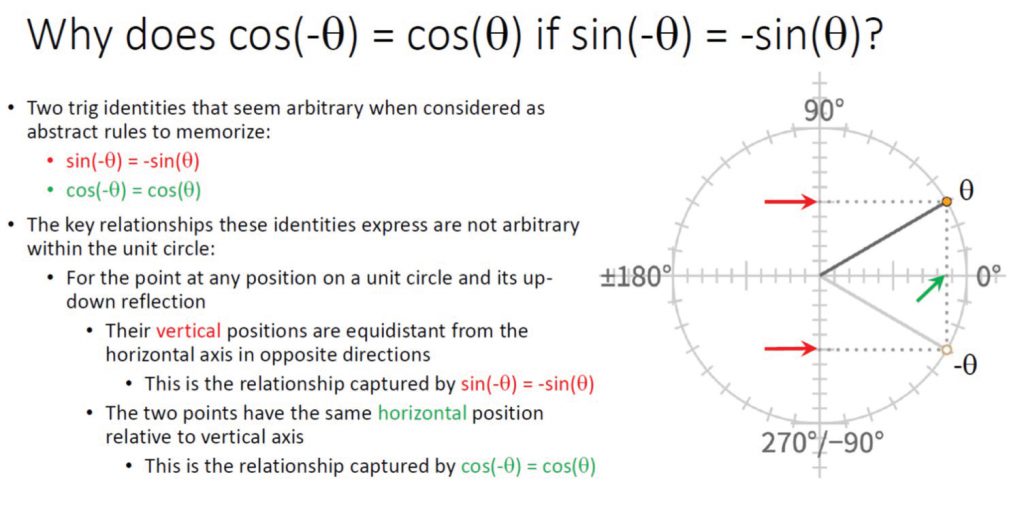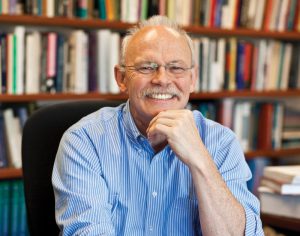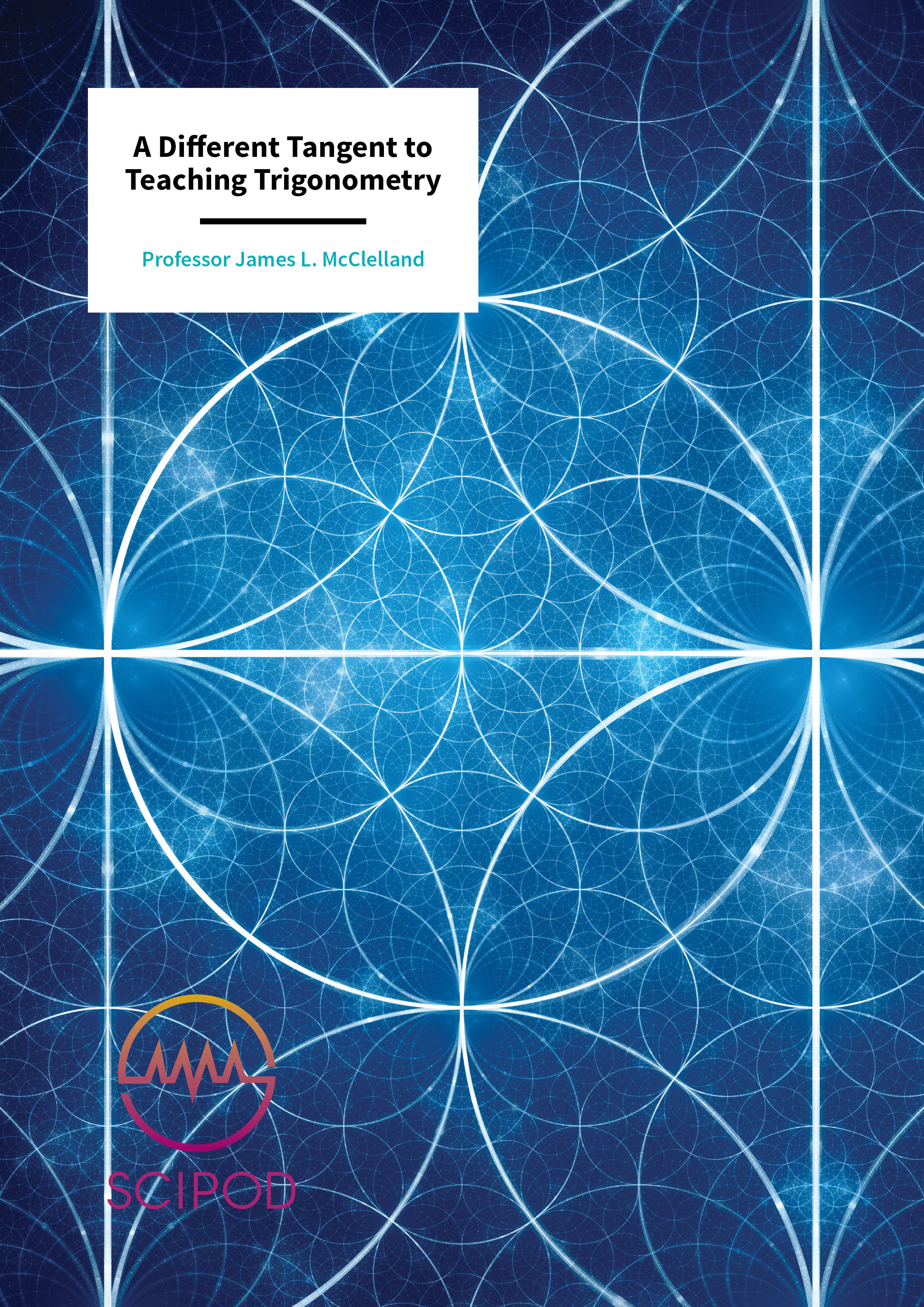Professor James McClelland – A Different Tangent to Teaching Trigonometry
Learning trigonometry is a challenge for many high-school students, impeding their access to careers in science, technology, engineering, and mathematics. Dr James McClelland, a professor of cognitive science at Stanford University, California, has been working to make higher-level mathematics concepts accessible to as many people as possible by assessing the effectiveness of a different approach to learning trigonometry at high-school.
The Vital Role of Mathematics Education
A good grasp of higher-level mathematics is often key to success in most careers related to science, technology, engineering, and mathematics (STEM). Mathematics is a central part of most scientific disciplines – as it provides methods to analyse data or build computational tools, both of which are principal aspects of scientific practice.
The fields of technology and science are developing at a progressively faster pace, increasing the need for qualified and competent professionals to cover a wide range of STEM-related positions. Delivering high-quality science and mathematics education to high-school students is therefore of crucial importance, to ensure that young generations are well-equipped to pursue further studies and careers in science and engineering.
According to a 2012 study by the Program on International Student Assessment (PISA), the United States is behind other nations in mathematics and science education. The study found that only 25% of US 15-year olds had reached a point where they could understand and complete higher order mathematics tasks, compared to the average 31% of students across the 34 countries assessed.
The National Mathematics Advisory Panel has often highlighted the need for educators in the US to find new ways of enhancing mathematics and science training for high-school students, as this would increase their chances of securing STEM-related industry, government, research and education positions.
Dr James McClelland, professor and director of the Center for Mind, Brain, and Computation at Stanford University, has been developing and testing a different approach to teaching higher-level mathematics concepts. Dr McClelland hopes to identify effective ways of making complex mathematical concepts meaningful and accessible to a greater number of people.
‘We are interested in opening up the world of higher-level mathematical ideas to as many people as possible. Our goal is to make the world of mathematical ideas and concepts meaningful.’
Stanford’s Trig Academy Platform
Dr McClelland’s research explores the role of a visuospatial representation grounded on mathematical concepts related to pre-calculus trigonometry, a subject that is challenging for many, but sits at the gateway to entry into many STEM fields. His studies are aimed at enhancing students’ understanding of trigonometry concepts and their reliance on them, with the hope that this might ultimately facilitate their success in other STEM-related disciplines.
‘We are interested in opening up the world of higher-level mathematical ideas to as many people as possible,’ explains Dr McClelland. ‘These are the ideas that scientists use to describe the physical world, enabling the technologies that have changed our world over the last three centuries and allowing innovations in medicine, physics, and computation that have transformed our society.’

The overreaching goal of his work is to make mathematics meaningful to all students – not just the few who somehow ‘get’ what mathematics is about. ‘Although some believe that making mathematics meaningful amounts to linking it to specific applied problems that are relevant to the daily lives of students, our construal of what it means to make math meaningful is different,’ he says. ‘We see mathematics as a set of constructed systems that provide powerful tools for inference and reasoning but that involve constructs and conventions that are often quite foreign to the experience of the learner.’
His work also has three broader aims – adapting the course material for use with students that have never been exposed to pre-calculus trigonometry – extending the content covered by the course to include additional pre-calculus trigonometry topics – and deploying the extended version of the current training program in 11th and 12th grade classrooms (for young people aged 16-18 years old), to assess its outcomes.
Dr McClelland and some of his colleagues have established the Trig Academy platform at Stanford University – a project aimed at providing students with a good and coherent background for understanding trigonometry. Instead of asking students to merely memorise rules and formulas, Dr McClelland hopes the materials his team has created will help students to understand and reason applying trigonometric relationships. The course provides students with a series of learning materials, through which they can progress independently.
A Structured System for Learning Trigonometry
Dr McClelland’s approach to teaching trigonometry is based on a spatially grounded conceptual model called the ‘unit circle’. The researcher hypothesises that this model could link trigonometric expressions to measurable properties of a physically realisable visuospatial model that can be internalised and applied as a basis to understand trigonometry-related concepts.
An example showing how the unit circle model can make two very arbitrary, and perhaps even seemingly contradictory, trigonometric relationships meaningful is provided in Figure 1. ‘We have found that students who ground their understanding of trigonometry in the unit circle correctly understand that the cosine of a value is equal to the cosine of the negative of the value, as captured by the formula cos(-θ)=cos(θ),’ Dr McClelland notes.
However, those who do not ground their understanding in the unit circle assume that cos(-θ)=-cos(θ). ‘Students who approach trigonometry as a system of arbitrary rules have no basis for understanding the correct relationship,’ Dr McClelland explains. ‘Unfortunately, the educational system leaves students far too susceptible to coming away from several weeks of trigonometry without appreciating the basic meaning of trigonometric expressions.’
‘By immersing the learner in the structured system and making it clear to the learner that the goal should be to understand how the system works – and not to memorise lists of formulas – we hope to convey a productive understanding that allows the student to build toward more advanced mathematics ideas and concepts,’ explains Dr McClelland.
The Trig Academy Platform views trigonometry as a system to understand the quantitative properties of spatial relations. Achieving a thorough understanding of this system and its conventions should ultimately make these relationships intuitive for students.
According to Dr McClelland, it is vital that students start seeing formulas as a way of efficiently expressing relationships they can visualise and manipulate in their minds, rather than as mere arrangements of meaningless symbols to manipulate, with the only goal being that of solving mathematics exercises.
Prompting this change in perception and ensuring that students achieve a full understanding of trigonometric relationships usually takes time – requiring the core realisation that the goal is to understand the system and not to achieve the correct results by memorising formulas. For this reason, students participating in the program are asked to take their time while progressing through the material.
Dr McClelland’s work is based on previous research suggesting that spatial ability and the acquisition of elaborated conceptual structures to approach mathematics and science problems are strongly associated with success in many STEM-related fields. Stanford’s Trig Academy curriculum specifically asks students to think about mathematical meaning in space, in the context of an imaginary circle (the unit circle) that should help them to better understand trigonometric relationships.
Students are asked to complete a series of interactive exercises that explain the overall mathematical system, prompting them to interact with it and observe resulting relationships. Eventually, the visual representations that assisted students in understanding the mathematical relationships are removed, asking them to internalise what they learned and reproduce the same visualisations in their mind.

Figure 1. By identifying variables such as θ with positions on a circle and identifying the trig functions sin and cos with the vertical and horizontal positions of points of the circle, the meaning of an expression like cos(-θ)=-cos(θ), and the reason why the expression is true becomes clear
Initial Results
So far, Dr McClelland has tested his approach to teaching trigonometry on undergraduate students at Stanford, after first exploring the strategies successful students used to solve trigonometry identity problems. Use of the unit circle was associated with better performance in exercises, leading McClelland and his team to build their learning platform around the unit circle. The original course material was developed with Stanford undergraduates in mind and the researchers then adapted it to make it more suitable for students with less prior knowledge of trigonometry.
In a first round with the new lesson materials, McClelland’s team recruited 25 volunteers from a collaborating nearby high school called Tahoma Summit School as well as 14 students at a neighbouring community college. The students were asked to complete pre-tests before starting the course, a series of exercises during the course, and post-tests once the course was completed.
Tahoma Summit students were supported by a teacher and had previously been exposed to trigonometry, while community college students completed their study completely independently, working entirely through an internet-based learning platform. The results collected were similar for both groups of students, despite the different learning conditions.
Most students showed a significant improvement in their post-test and their performance was found to be the same three weeks after the study, suggesting that the ideas they learned were well retained.
Overall, the study findings suggested that while learning how to use the unit circle visualisation method required more time than other strategies, it was generally associated with more accurate performance. Dr McClelland says, ‘our greatest measure of success comes from students, who tell us we have changed their experience of mathematics.’
After completing the trigonometry materials delivered by Dr McClelland, for instance, one student wrote, ‘I would like to add that the study material is amazing and I have learned a great deal. This time around I’m actually learning something and comprehending everything so I appreciate this study very much.’
The Trig Academy, in its current form, does not work for all students. However, high-school students who had little prior knowledge of pre-requisite mathematical concepts that were built on in the course material seemed to encounter greater learning difficulties during their studies. ‘Up to the present, we have been able to achieve successful learning outcomes with three-quarters of all students,’ says Dr McClelland. ‘However, we find that the remaining one-quarter of students still don’t “get” the ideas we are trying to teach them. Our focus now is on understanding the key prior ideas and thinking skills these students may need to allow them to succeed.’

Making Mathematics Meaningful
Mathematics is often viewed by students as a subject based on numbers, symbols and rules – but it is actually the study of patterns and relationships. These relationships are at the core of most scientific disciplines and gaining a comprehensive understanding of them can be beneficial for all students who wish to pursue further studies and careers in STEM-related fields.
Academic programs such as the one developed by Dr McClelland and his colleagues could be incredibly valuable, providing students with a thorough grasp of important mathematical concepts that will help them stand out when competing for a variety of scientific positions in future.
Dr McClelland is now planning to engage in further collaboration with Summit Public Schools, introducing the materials that he developed into several other schools in this network. In future, he would also like to apply similar learning approaches to other areas of mathematics.
Additional research exploring the impact of learning through visuospatial representations on students’ performance and understanding of mathematical concepts will help to inform educators and policymakers on the best strategies to teach mathematics.
‘Our goal is to make the world of mathematical ideas and concepts meaningful,’ says Dr McClelland. ‘Math can seem to be a hopeless jumble of complex expressions and it is often taught as a system of arbitrary rules that must be memorised. Instead, mathematics is really a set of ideas, not just a language for describing them. To learn these ideas, we aim to teach students to see relationships they have not considered before, and then gradually learn to rely on these relationships.’
Meet the researcher

CREDIT: Angela Drury – Stanford University
Professor James L. McClelland
Lucie Stern Professor in the Social Sciences
Director, Center for Mind, Brain and Computation
Department of Psychology
Stanford University
Stanford, CA
USA
Dr James McClelland is a Professor of Cognitive Science in the Psychology Department and Director of the Center for Mind, Brain and Computation at Stanford University. He received a BA in Psychology from Columbia University and a PhD in Cognitive Psychology from the University of Pennsylvania. He has since held teaching and faculty positions at numerous universities, including the University of California and Carnegie-Mellon University. Professor McClelland’s research addresses a broad range of topics in cognitive science and neuroscience, including perception and perceptual decision making, learning and memory, language and reading, semantic and mathematical cognition and cognitive development. Over the course of his career, he has contributed substantially to both experimental and theoretical literature in several areas. Professor McClelland has also served as Senior Editor of the journal Cognitive Science, as President of the Cognitive Science Society, as a member of the National Advisory Mental Health Council and as President of the Federation of Associations in the Behavioural and Brain Sciences. He has received many honours and awards, including the APS William James Fellow Award for lifetime contributions to the basic science of psychology, the David E. Rumelhart prize for contributions to the theoretical foundations of Cognitive Science, and the Heineken Prize in Cognitive Science.
CONTACT
E: mcclelland@stanford.edu
W: https://stanford.edu/~jlmcc/
KEY COLLABORATORS
Kevin Mickey, David Romano, Su Su, and Laura Weseman Kreisel, Stanford University.
Kyle Moyer, Summit Public Schools
FUNDING
Grant IES R305A150453 from the US Department of Education to J. McClelland and National Science Foundation Graduate Research Fellowship to K. Mickey
FURTHER READING
K Mickey and JL McClelland, The unit circle as a grounded conceptual structure in pre-calculus trigonometry. In DC Geary, DB Berch, R Ochsendorf and K Mann, Koepke (Eds.), Acquisition of Complex Arithmetic Skills and Higher-Order Mathematics Concepts, 2017, Vol. 3, Elsevier/Academic Press.



